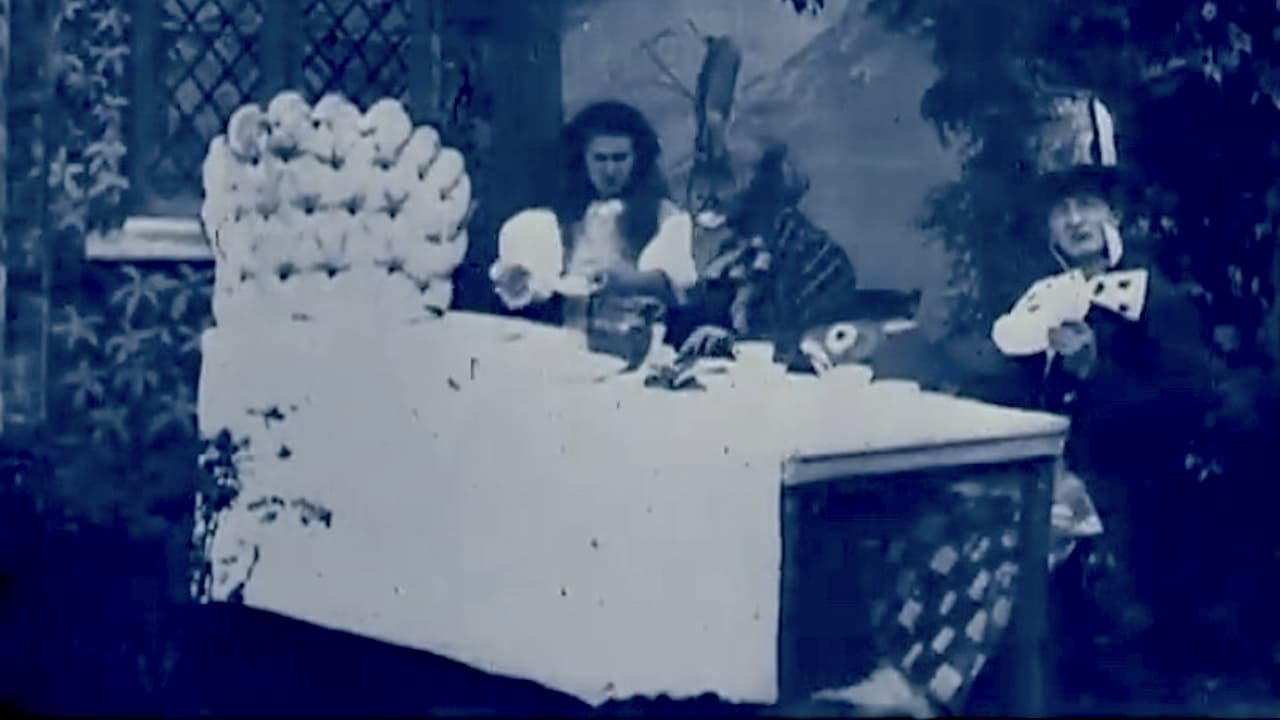

Nowadays, over-reliance on special effects is such a source of contention in the film industry, that it's refreshing to revisit early cinema, where, over a century ago, cinematic effects were akin to magic, and considered the greatest boon in the unparalleled potential of the medium. In this respect, 1903's Alice in Wonderland, the earliest cinematic adaptation of the beloved Lewis Carroll novel, is a treat to watch, if only for the thought of Carroll (who had only recently passed away) tickled pink at the notion that the magic and wonder of his novel could be realized in live action in a fashion impossible on the stage. Ultimately, the eight minute film (reportedly, some cuts ran as long as 16 - an epic for 1903) is an 'adaptation' of Carroll's novel in only the crudest sense, its disconnected succession of scenes likely nonsensical for those unfamiliar with the story. As narrative in cinema was only a recent concept, this was hardly the point. Where the film excels, as is the case for its innumerable remakes, Disney or otherwise, is in its visuals. Again, for contemporary audiences, being wowed will take some suspension of disbelief, but the real joy lies in imagining 1903 audiences gasping in awe at the shrinking and growing Alice (amusingly done by having the actor simply stand closer or farther away from the camera, with varying background sets), or the magically appearing Cheshire Cat (superimposed through double-exposure photography, and sans trademark Disney grin, to boot). The film gets a fair amount of mileage out of its costumes, with the White Rabbit suit and marching playing card army of the Queen of Hearts establishing a proudly storybook aesthetic, demonstrating whiffs of inspiration for the tale's iconic animated and less-admired Tim Burton adaptations alike. Most interesting is the fact that the opening title card declares the ensuing whimsy to simply be Alice's dream, while later adaptations are more calculatedly ambiguous about the fantasy realm of Wonderland. It's a curious paradox that the first take on Carroll's classic is at once its most magical in terms of perceived effect on viewers, and yet the least willing to buy into its own magic. It's no wonder generations of children and adults alike continued to revisit Wonderland, for proper closure of a fantasy, surrealist realm they were allowed to believe to be real. -7/10
... View MoreAt eight minutes this was actually considered a long film and it is a very condensed version of the book Alice in Wonderland.Unfortunately these early film stocks have degraded and even though this version is restored, it still makes for difficult viewing but at least its preserved.Special effects are used to show Alice growing and shrinking and the latter scenes has a large gathering of costumed characters as Alice encounters the Queen of Hearts. The footage of the Cheshire Cat looks rather charming as it also highlights almost 'stone age' special effects technique.Its hard to rate these films properly as they are essentially surviving examples of the history of the cinema.
... View MoreI don't know if this film exists in another form other than the public domain one that is available on the internet. My review is based solely on this public domain print. If there is a restored print available, please, please, please see that one instead, as the public domain one is severely degraded--much more so than usual. This is because older films were made on nitrate stock that would begin degrading (turning to powder, liquifying or even exploding over time) almost immediately. Many early sound and silent films simply no longer exist due to this decomposition. ALICE is so badly degraded that many portions of the film are almost unwatchable.As for the film apart from that, like many of the films of these early years of cinema, they've taken a literary classic and replicated scenes from it--not the entire film. As most films were five minutes or less (often much less), the fact that this is about eight is actually unusual--making this "full-length" at least for the time. In many ways, it was like a highlights clip. The costumes and sets, for 1903, were very good but when compared to films of the middle and late silent era, it would appear very crude and incomplete. If I were comparing it to other 1903 era films, I'd give it a 7 or 8, but given the severe decomposition, it's probably not worth seeing for the average person and more of interest to film historians and devoted fans.
... View MoreThe remnants of this silent movie was added to Jonathan Miller's Alice DVD as a Bonus.It has to be viewed as an historical document and hardly for entertainment value. But May Clarke deserved a better fate than being called "ugly".I have a photo of her on one of my Alice sites and she's at least attractive enough. This was the final film of the 3 she made,all before 1904 so there's no evidence of what her speaking voice was like. In answer to that rather ignorant remark I don't think any movie studios at this time employed children but the age of Alice should not be brought into question when you realize many older actreses played her.The child star was yet to be invented and all actors came from the stage When you think of it this Alice silent is now over 100 years old
... View More